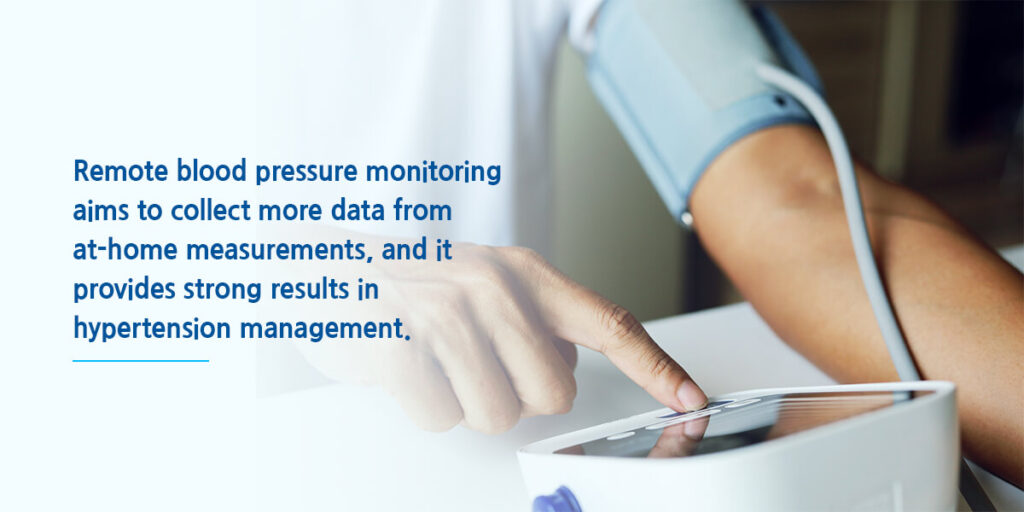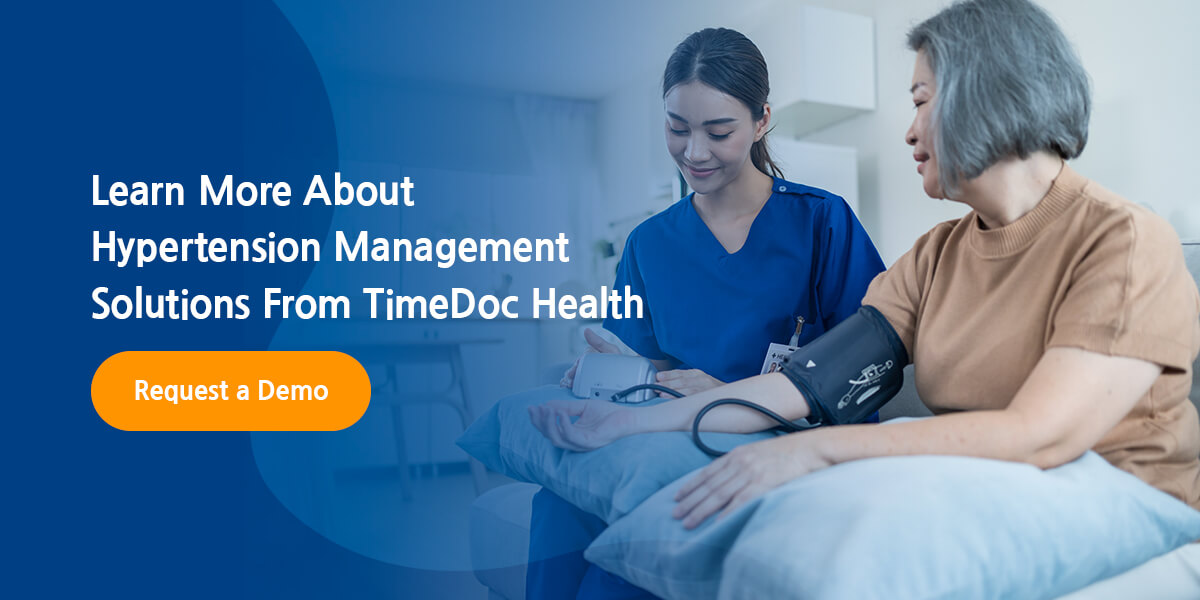Hypertension comes with many challenges for patients, providers and payers, with high prevalence and unique management demands. This condition affects almost half of adults in the United States, only about a quarter of whom have their hypertension under control. While there are many reasons for this inadequate response, some of the most pressing issues include problems adhering to a treatment plan or understanding the condition.
Fortunately, remote patient monitoring (RPM) has emerged as a promising approach. These programs can address some of the top challenges with hypertension management while improving outcomes and boosting reimbursement.
The Rise of RPM for Hypertension Management
A large analysis published in the Journal of the American Medical Association (JAMA) revealed some noteworthy statistics about the power of RPM. Between February 2020 and September 2021, general RPM — instead of only continuous glucose monitoring (CGM) — increased by 555%. RPM use per month increased from 91 claims per 100,000 enrollees to an astounding 594 claims per 100,000 enrollees. CGM use also increased by 42%.
The analysis told us about who is benefiting from RPM, too. Primary care providers delivered most RPM services — 63.1%. Other common specialties that used it were cardiology and pulmonology at 19.7% and 4.1%, respectively. The vast majority of primary diagnoses used for RPM services were for hypertension, which accounted for 62.5% of services. The next most common diagnoses were:
- Diabetes: 8.3%
- Sleep disorders: 3.9%
- Hyperlipidemia: 3.5%
- Heart disease: 3.2%
We see clear demand and suitability for remote patient monitoring for blood pressure and hypertension management. The available technology makes at-home measurements and clinical integration easy and effective, and the attentive support from care teams plays a significant role in improving outcomes and helping patients overcome barriers to care.
Effects of Remote Blood Pressure Monitoring
Remote blood pressure monitoring aims to collect more data from at-home measurements, and it provides strong results in hypertension management. Compared to usual care and self-monitoring alone, RPM significantly reduces systolic blood pressure (SBP) and diastolic blood pressure (DBP). The American Heart Association (AHA) reports the impact can increase with long-term interventions, especially if the intervention includes multiple behavior change techniques.
RPM has also been used in other conditions, like heart failure and arrhythmia, making it a potential option for cardiovascular disease management. Data has shown some success of remote cardiac monitoring for predicting heart failure decompensation and providing early, accurate detection of arrhythmia.
Since RPM can be highly variable, the AHA has created some guiding principles for its design and use to support successful programs. These include:
- Usability and access: RPM technology must follow evidence-based, user-centered design principles and best practices to offer all patients an equitable, customized and intuitive experience. Without a strong experience, users are more likely to become frustrated, make errors and ultimately not adhere to the program.
- Interoperability and integration: While RPM must work well for the patient, it must also provide providers with secure, clinically valuable information. Ideally, RPM should incorporate the flow of data into other health systems and facilitate information sharing with a care team that includes other clinicians and facilities.
- Data accuracy and patient safety: RPM technologies must be accurate and reliable to limit the risk of harm to patients. This accuracy includes proper measurement practices and access to real-time data for up-to-date information.
- Data privacy: Lastly, the strict regulations of the healthcare industry make data privacy a necessity. RPM programs must handle data appropriately in a remote data repository with robust privacy policies.
Advantages of Managing Hypertension With Remote Patient Monitoring
The advantages of using RPM for hypertension management go beyond blood pressure readings and include:
- Expanding data collection: With RPM, you can collect a wide range of metrics and information about the patient’s lifestyle, habits and barriers to care to guide interventions and achieve more effective results.
- Overcoming clinical inertia: Clinical inertia involves the undertreatment or lack of treatment intensification for patients with uncontrolled hypertension. The addition of real-time data can help clinicians move past the “wait and see” approach and provide reliable interventions. One study found that electronic data about patient adherence helped avoid clinical inertia and even improved patient ratings about the quality of care and physician communication.
- Increasing patient self-management practices: RPM provides more one-to-one support to patients, with attentive care managers and 24/7 assistance. It heavily relies on patient education and helping users learn about their conditions to address some of the biggest barriers to adherence.
- Improving adherence: This level of support can boost adherence through education, problem-solving and assistance from the care team. It can also help providers get an accurate understanding of how often patients are following treatment plans.
- Saving patients money: Better health outcomes can save money across the health system. Patients and payers benefit from fewer hospital visits and prescriptions.
- Increasing reimbursement: Providers using RPM can get reimbursed for eligible Medicare and Medicaid patients enrolled in the program. It offers a great way to pursue value-based care initiatives while receiving compensation for the service.
While RPM technology is essential to a successful program, it’s also vital to consider the role of care coordination and management. Care teams can make or break the program and are critical for driving these positive outcomes.
Key Features for an RPM Hypertension Management Solution
Not all RPM solutions are created equal. When you’re looking for an RPM partner, keep an eye out for these essential features:
- Support for multiple chronic diseases: Many patients with hypertension or other conditions that benefit from RPM also manage multiple chronic conditions. RPM can address the intertwined nature of these conditions and how they overlap. Ensure your solution can help patients with multiple conditions.
- Integration and interoperability with an electronic health record (EHR): EHRs are a major part of any clinical workflow, and an RPM should integrate with them to provide a user-friendly, efficient process for providers. Look for a solution that works from within your EHR, augmenting existing clinician workflows rather than creating extra steps or burdens.
- Continuous feedback loops: Research suggests the need for long-term maintenance strategies to keep patients engaged and maintain adherence over the long term. Care management helps sustain engagement and can provide more opportunities for education and intervention.
Learn More About Hypertension Management Solutions From TimeDoc Health
Improving hypertension outcomes calls for comprehensive solutions. TimeDoc Health delivers streamlined RPM solutions, complete with a flexible platform to integrate with your EHR and provide real-time clinical data on at-home readings. Our clinically trained care managers serve as an extension of your practice and help patients stay on track and improve outcomes. They’ll work with multiple chronic conditions and create a trusted patient experience. Whether your goal is to reduce acute health events, improve outcomes, increase reimbursements or something else, TimeDoc Health can help.
To learn more about our RPM solutions, please request your demo with the form below or contact us at info@timedochealth.com for more information!



